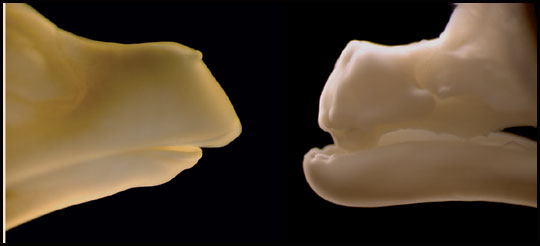Science fiction, of course. Or not?
Dinosaur DNA is very unlikely to be preserved for long enough periods of time for us to find some. And even if we do, it's a long way from DNA to a T. Rex. But there are dinosaur descendants roaming the earth right now. That's right, birds. So perhaps dinosaur DNA is not lost completely. This has spurred John ("Jack") R. Horner, curator of paleontology at the museum of the Rockies and Regents Professor at Montana State University, to consider building a dinosaur by using chickens (see video). By using what is called 'atavism activation', ancestral traits that are suppressed, could be 'unsupressed'. Observed examples in nature of this process, are snakes or whales born with limbs, or dolphins with hind fins. Or people with webbed fingers or toes.
What if we could do this in chickens? If, let's say the 'tail suppressing genes' are suppressed, will this mean that, voila, a chicken with a tail is born?
Even though this sounds far-fetched, researchers have found mutations that cause chicken to develop teeth (see figure 1) (Harris et al., 2006).

Figure 1: Normally developed chicken embryo (left), and one with alligator-like teeth (right).
(Source: Discovery News, courtesy of Matthew Harris)
Of course, it's not as easy as it might sound. Monogenic traits are very rare, and it is very unlikely that teeths, or claws, or a tail, or any other dinosaur trait is monogenic. On top of this genes are not isolated islands, they interact with each other, making things even more complicated. Nevertheless, through studying embryonic development of chickens, many developmental processes might become increasingly understood, including the suppression of ancestral traits.
All hail 'Chickenosaurus'.
References
Harris, M.P.; Hasso, S.M.; Ferguson, M.J.W. and Fallon, J.F. (2006). The Development of Archosaurian First-Generation Teeth in a Chicken Mutant. Current Biology. 16; pp. 371 - 377. (click here for the original article.)





Comments